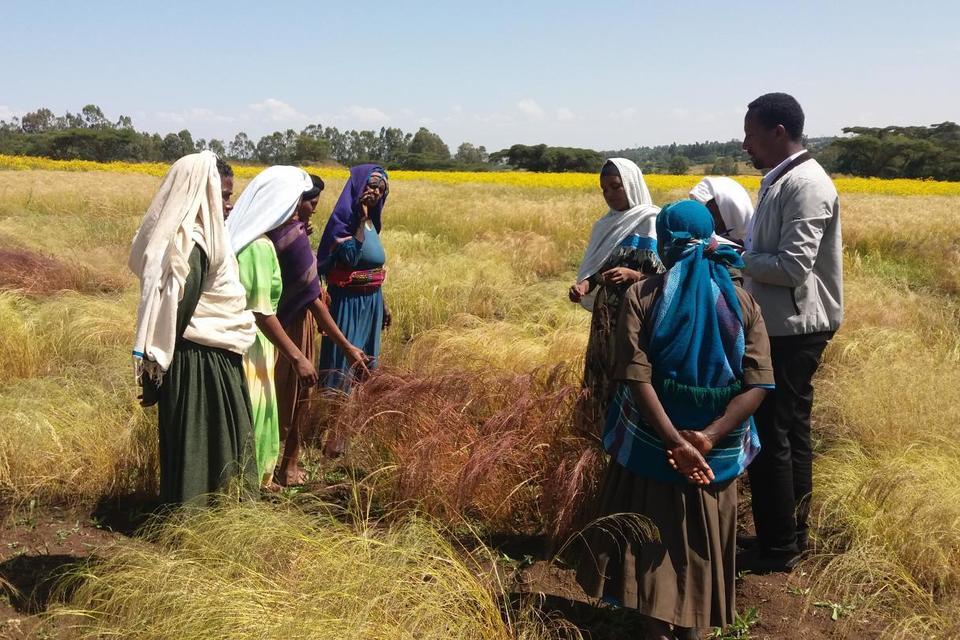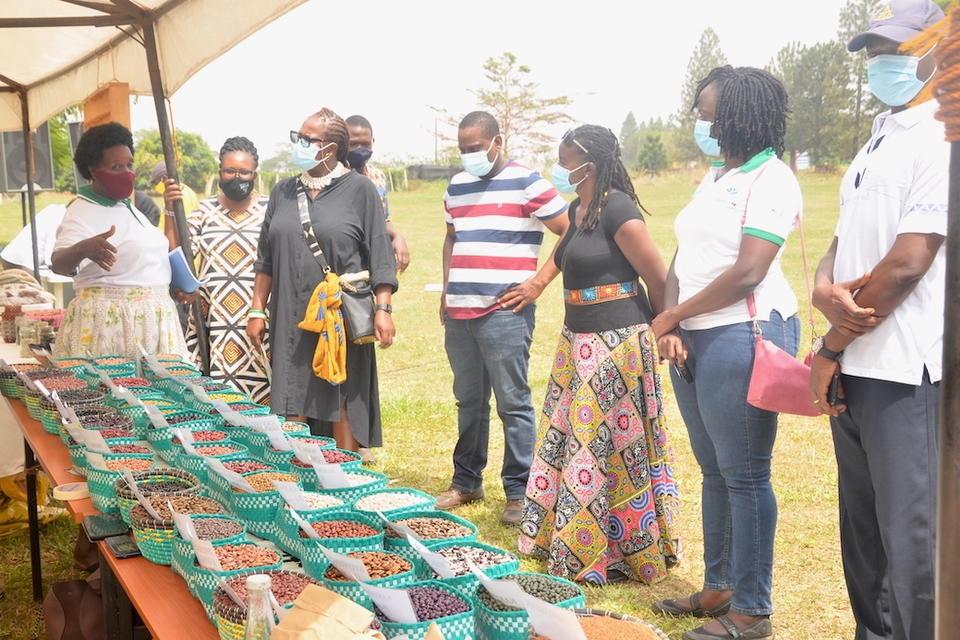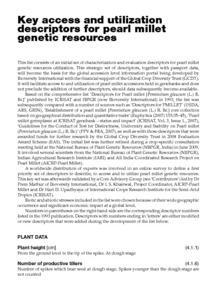Blog Mother of Grains: what millet teaches us about biodiversity

Hardy, nutritious crops like millets were once commonplace on farms and plates. Research shows that by bringing back these “neglected and underutilized species” to diversify food systems, we can reap benefits ranging from climate resilience to healthier diets.
Have you met the Poaceae family?
Made up of pearl, foxtail, proso, barnyard, little, kodo, browntop, finger and Guinea millets, plus fonio, sorghum, and teff, this varied group of cereals is the subject of the International Year of Millets. The United Nations’ choice to highlight these grains- technically grasses- is fitting for 2023, when resilience is on the tip of everybody’s tongues. Traditionally appearing in diets from Sub-Saharan Africa to China, millets have long grown in arid or unforgiving landscapes. Besides being cooked as a staple grain useful with any meal, millets have been frequently turned into porridge, bread, and beer.
Yet with the consolidation of contemporary diets around the staples of rice, wheat, and maize, millets have vanished from many parts of the world where they once thrived. Ironically, these crops are being phased out at the precise moment when they are most needed.
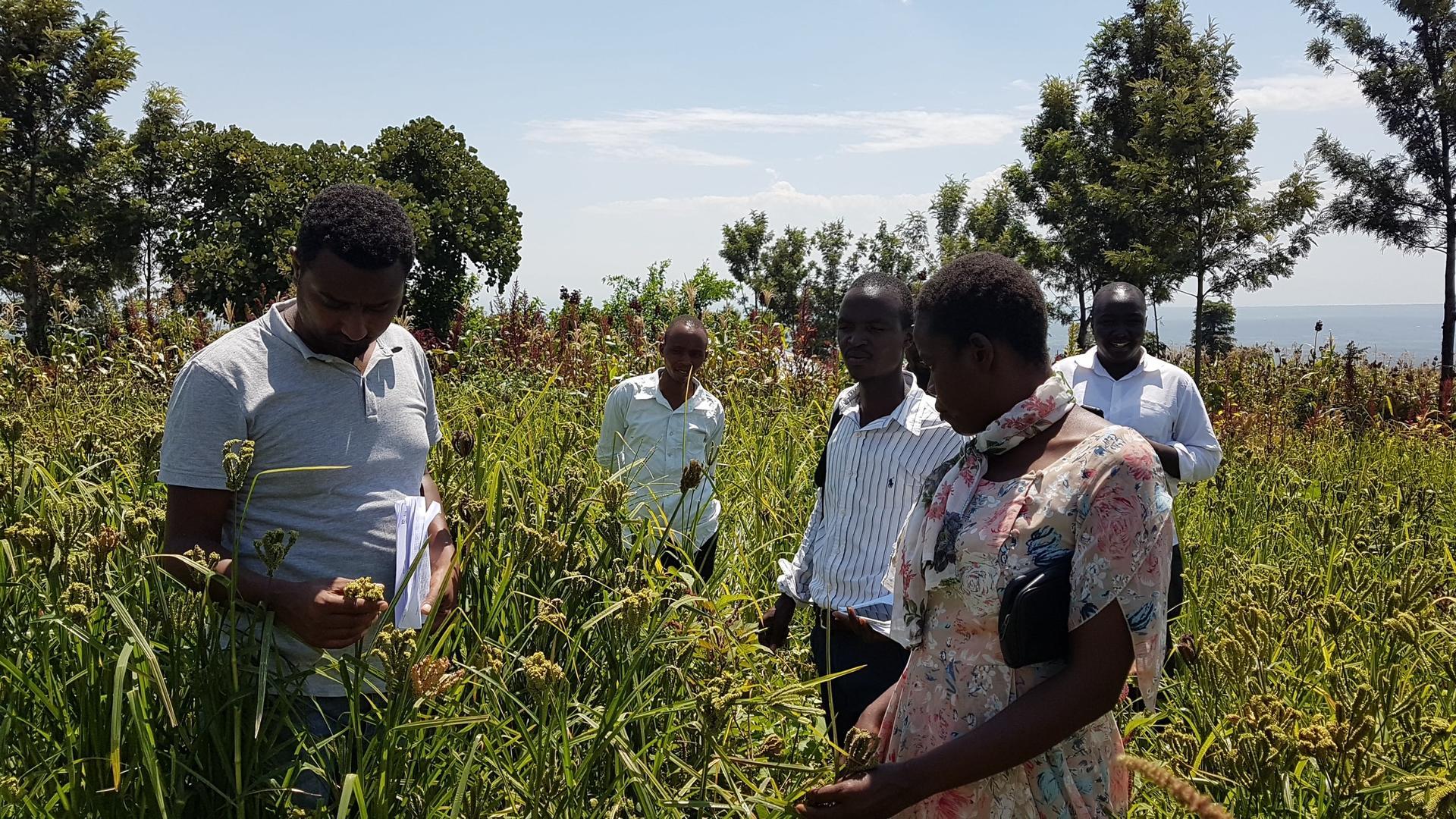
Inspecting millet growing in in Kisumu, Kenya: Alliance scientist Yosef Gebrehawarya with local farmers. Credit: Tobias Recha
India spotlights ‘mother of grains’
The world’s largest producer of millet (over 10 million tons annually) refers to the crop as “Shree Anna”: the mother of all grains. This designation by the Indian government reflects its hope to position the crop as an agent of holistic change, for rural farmers in need of income as well as urban consumers seeking healthier food options.

Field producing millets in Jodhpur, India. See below for information about the project.
At the World Millet Conference— initiated by the Indian government and held in New Delhi in March 2023— farmers, researchers, policymakers, and agro-food processors gathered from around the world to share strategies to increase production and utilization of millets in the global food system. In attendance were Alliance of Bioversity and CIAT scientists Dr. Yosef Gebrehawaryat (from Ethiopia) and Dr. Jai Rana (from India) whose work overlaps around diverse grains across their respective home continents. They note:
“Millets are a vital source of healthy food for millions of people in Africa and Asia, with benefits of millets including resilience to climate change, low inputs demand, little water use, and high essential nutrient content”.
The nature-positive impact of millets were emphasized by Indian Prime Minister Shri Narendra Modi, who inaugurated the conference and said that since millets do not require excessive chemical fertilizers and pesticides, they can be a cleaner, healthier food for future generations. The President of Ethiopia, Sahle-Work Zewde, also joined to underscore the potential of millets, saying that in her country, favored varieties of finger millet can help eliminate hunger, adapt to climate change, and promote biodiversity (Another related crop in Ethiopia is teff, the key ingredient in injera flatbread). Other international speakers covered millets’ diverse uses in the food and beverage industry, traditional knowledge and innovation in cultivation, and millet-based diets for combatting malnutrition and other diseases.
Making millets profitable for the long-term
Research by the Alliance/Bioversity International on millets stretches back decades. Studies on neglected and underutilized species, conducted with IFAD and spanning from 2001-2015, have demonstrated the role that minor millets can play in empowering farmers, especially women who are part of self-help groups and farmers’ associations. In rural communities, sustained efforts to introduce modern processing technology and value addition in the form of novel food products led to improvements in both nutrition security and income, and put millets back on the menu.
As India emerges from the COVID-19 pandemic, researchers like Dr. Jai Rana see new opportunities to mainstream agrobiodiversity in the country’s agricultural system, starting from the grassroots. Smallholder farmers’ experiential knowledge, combined with renewed interest in local and organic food production, open paths to develop value chains around more diverse crops, including millet.
Rana reports back from a recent launch of native pearl millet products in Jodhpur, Western India, on 19 May 2023:
“As we conducted focus group discussions, many farmers asked researchers if we could enable access to famous landraces that were once grown there but have disappeared. We repatriated many varieties from genebanks, not only bringing them back to cultivation at farms but also took to market through value chain development.”
Seven years ago, these landraces were nearly extinct, now they are being grown over 1,000 hectares. Similar value chains have been also developed in other sites across India: for Jowar, Bajra, finger millet and little millet at Jhabua, Madhya Pradesh, and for the grain amaranth at Mandi, Himachal Pradesh.1
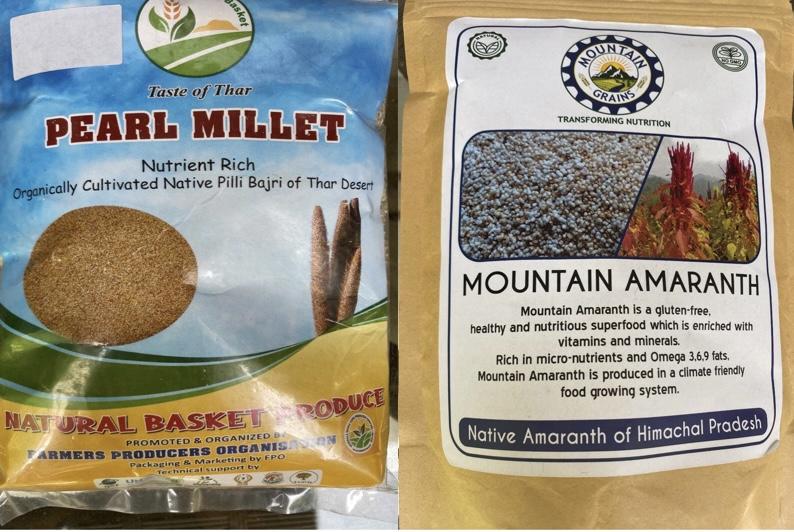
Examples of millet and amaranth products now being marketed in India.
More than one year for millets
“It’s pleasing to see that the agenda on neglected and underutilized crops (NUS) we worked on for more than 20 years is now gaining so much traction,” says Dr. Carlo Fadda, Alliance Research Director for Biodiversity for Food and Agriculture.
“If we want to reverse the negative impact of agriculture to the planet and our health, this biodiversity is needed for more resilient, nutritious, green food systems.”
At the same time, participants at the World Millet Conference stressed the essential role of policymakers and governments to support millet farming and facilitate market access. Following the outcomes of UN Biodiversity’s COP15 in Montreal, the Global Biodiversity Framework intends to keep countries’ policy commitments on track (with one indicator being the Alliance’s Agrobiodiversity Index).
Policy recognition of the importance of diverse crops like millets, combined with their on-the-ground cultivation and use, are the first steps in ensuring that they continue to be integrated into sustainable and nourishing food systems.
1The Alliance of Bioversity International and CIAT is promoting conservation and cultivation of millets under UN Environment Implemented GEF funded project “Mainstreaming Agricultural Biodiversity Conservation and Utilization in Agricultural Sector to Ensure Ecosystem Services and Reduce Vulnerability” jointly with the Indian Council of Agricultural Research, Agriculture Universities and Civil Society Organizations in many states such as Himachal Pradesh, Uttarakhand, Madhya Pradesh, Chhattisgarh, Maharashtra, Odisha, and Rajasthan of India.
The Team

Jai Rana
Senior Scientist and Country Representative for India
Yosef Gebrehawaryat Kidane
Senior Scientist - Biodiversity for food and agriculture
FAQs about Millets
1. What are the health benefits of millets?
Millets offer a range of health benefits due to their rich nutritional profile. They are rich in dietary fiber, making them beneficial for digestion. Millets are also packed with essential nutrients such as magnesium, phosphorus, manganese, and B vitamins including niacin, thiamine, and riboflavin. Additionally, they have a lower glycemic index compared to refined grains, and are naturally gluten free, which helps in managing blood sugar levels. Regular consumption of millets has been linked to improved heart health, better weight management, and reduced risk of chronic diseases like diabetes and hypertension.
2. Besides India, are there other countries that are working to bring millets back into cultivation?
Yes, several countries around the world are recognizing the nutritional and environmental benefits of millets and are actively promoting their cultivation. Some notable examples include African countries like Nigeria, Mali, and Niger, where millets have been traditional staples but faced a decline in cultivation due to the promotion of cash crops. Governments and organizations in these countries are now implementing programs to reintroduce millets and promote their cultivation to improve food security and sustainable agriculture. Additionally, China, the United States, and several European countries have shown increasing interest in millets due to their resilience to climate change and suitability for sustainable farming practices.
3. How can consumers incorporate more millets into their diet?
The health properties of millets are increasing consumer interest, and there are various ways to can incorporate millets into one's diet to enjoy their nutritional benefits. One simple method is substituting rice or refined grains with millets in traditional recipes such as rice dishes, bread, or porridge. Millets can also be used in salads, soups, and stews to add texture and flavor. Additionally, millet flour can be used in baking for making cookies, muffins, and pancakes. Experimenting with different types of millets such as pearl millet, foxtail millet, and finger millet can also add diversity to meals. Keep in mind that it’s important to rinse millets thoroughly before cooking to remove any bitterness and to ensure proper cooking.

